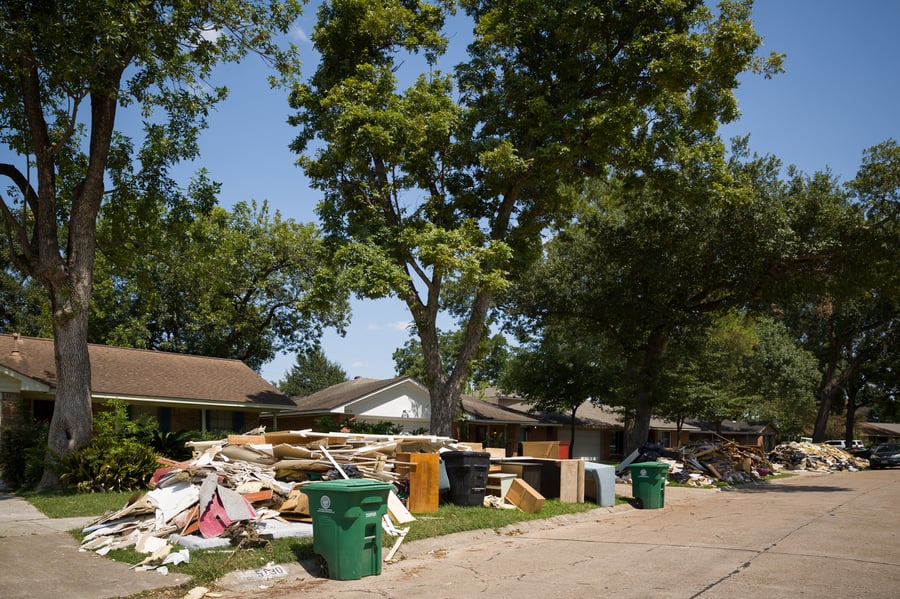
Texas has seen quite a number of devastating storms over the years. The Galveston storm of 1900, however, is considered to be the most devastating of them all, claiming close to 8,000 casualties.
More recently, Hurricane Harvey of 2017 still rings in the minds of many Texans. The storm hit Texas on August 25th, 2017 and by October 13th, at least 88 Texans had died. Wind, rain, and floods had caused the majority of these deaths. Others were caused by ‘unsafe or unhealthy conditions’ linked to the disruption of vital services such as medical care and transportation.
Hurricane Harvey’s Scale and Damages
During its first landfall as a category 4 storm, Hurricane Harvey’s diameter was 280 miles with winds of up to 130 mph, clearly a wind event. Ultimately, however, the storm became a flood event as it broke the record for the storm with the most rainfall by dumping approximately 51 inches of rain in most parts of Texas. Other parts such as the coastal cities of Port Arthur and Beaumont got in the neighborhood of 26 inches of rainfall in just 24 hours. The rain that fell across Louisiana and Texas was more than 20 trillion gallons. This is equal to the amount of water that New York City would consume for five decades.
Harvey lingered over Texas for days and destroyed more than 204,000 apartment buildings and homes and an estimated one million vehicles were damaged. More than 738,000 people signed up with the Federal Emergency Management Agency. About 10,000 persons who were trapped in flooded homes or highways needed rescue. According to the National Hurricane Center, the storm caused damages of over $125 billion. It ranks second among the most costly hurricanes to have hit the U.S. mainland.
Almost a month after the storm, around 4,000 homes had not had their power restored, and a majority of the affected water and wastewater systems were non-functional. According to a news article published in 2018, 8% of the affected people had not been able to go back to their homes and 15% of the damaged homes were still unlivable. Some had to live in homes with toxic molds as they could not afford to leave.
The TML Intergovernmental Risk Pool Represents the Collective Strength of Texas
The Pool's goal in disasters such as these, through the collective strength of the Members, is to offer the assistance and resources necessary to help the members continue serving their citizens and get back to normal operations as quickly as possible.
In the aftermath of Harvey, a massive effort was undertaken to rebuild. Many Texas local governments responded with aid to the affected communities. Participants of the Risk Pool that were not able to respond directly were nevertheless part of the relief effort in an indirect way as the Risk Pool represents the collective strength of cities and other eligible local governments across Texas. This risk sharing partnership is built to respond to catastrophic events such as Harvey. This collective strength of the Membership allowed the Pool to provide both the financial resources needed to remediate and rebuild damaged property, and to partner with the affected members by providing assistance and counsel immediately after and throughout the rebuild process. The Risk Pool, by partnering with local government so that Texas communities are stronger together, continues to meet its original mission to provide its members with loss prevention services along with stable, economic and lasting risk financing for catastrophic events.
Twenty-two months post landfall by Harvey, over 89% of the damage repairs have been completed, leaving only those with the most significant damage not yet 100% complete. Importantly, the Risk Pool continues to explore ways to manage costs while expediting repairs for future catastrophic events so that Members can restore services to their members sooner in alignment with the Pool’s core values of public service, operational excellence, fiscal responsibility and integrity.



